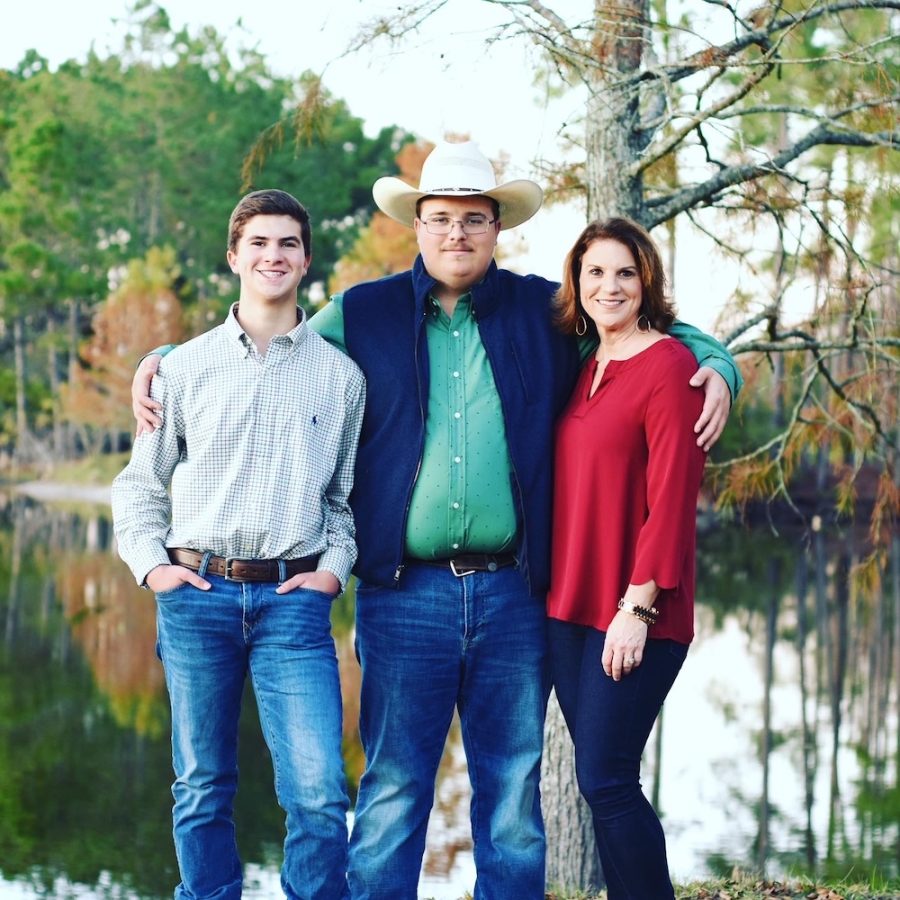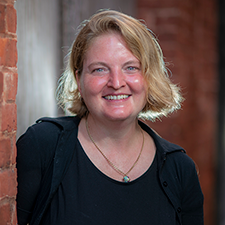More than a year ago, 16-year-old Cason Roberts was getting out of the shower and noticed a small lump forming on his lower back near his ribs.
The swelling wasn’t painful, but Cason, who is a member of the Lowndes High School tennis team in Valdosta, Georgia, knew something wasn’t right.
“I just thought, ‘Hmmm. This feels a little weird,’ so I told my mom about it,’” Cason said. “She took me to see the doctor.”
The Roberts family met with Dr. Charles Howell, the CEO of Augusta University Medical Associates, at the Medical College of Georgia’s clinic in Valdosta. Howell, who earned his bachelor’s degree from Valdosta State University and his medical degree from MCG, retired as surgeon-in-chief at the Children’s Hospital of Georgia in 2018.
During his 40-year career at MCG and AU Health, Howell performed an estimated 16,000 pediatric procedures and operated on about 400 babies and children each year.
In fact, Howell operated on Cason when he was 2 years old after a hernia repair he received in Valdosta got infected with staph and the family traveled to Children’s in Augusta for treatment.
“We knew Dr. Howell from our hometown of Valdosta and he took such great care of Cason when he was a toddler. I mean, Cason was so sick and Dr. Howell was incredible,” said Rachel Roberts, Cason’s mother. “So, when we discovered this mass, we contacted Dr. Howell again. After meeting with us at the clinic in Valdosta, he put us in touch with the doctors at the Children’s Hospital of Georgia.”
While the family was concerned, Rachel Roberts said they knew Cason would be in good hands in Augusta.
“We were told that Cason had a mass on his back and that it needed to be removed,” Rachel Roberts said. “At first, they told us they really didn’t know what it was, but they were very honest and said, ‘We can’t rule out cancer. We just can’t.’”
On Feb. 25, 2020, Cason had surgery at Children’s to remove the mass from his back.
“Everything went really well and Cason was fine after the surgery and quickly recovered,” Rachel Roberts said. “So, we kind of let our guard down a little bit thinking it was all over.”
Weeks later, the Roberts family got the call they were hoping to never receive.
“Dr. Kenneth Walters, Cason’s surgeon, called us back and said that it was cancer,” Rachel Roberts said. “I will never forget that day.”
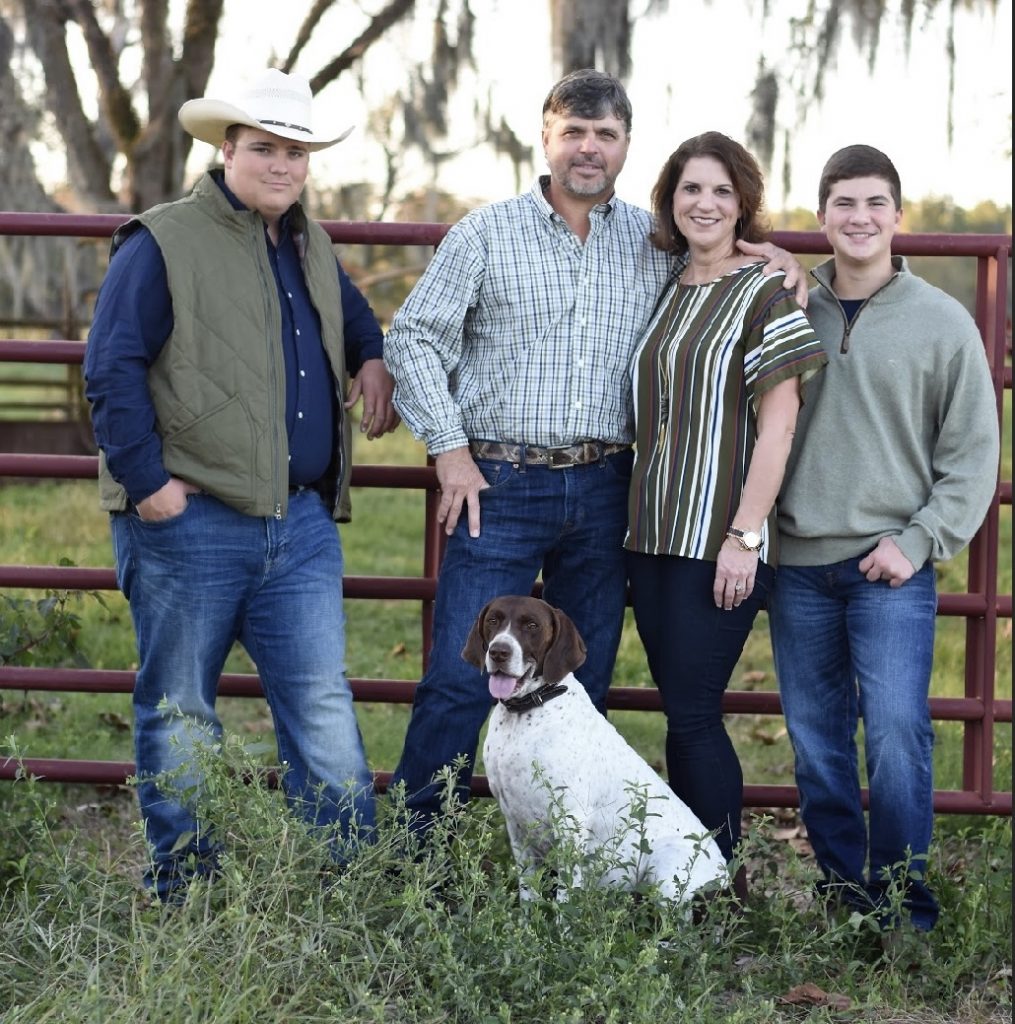
The Roberts family was told Cason had soft tissue sarcoma, a rare type of cancer that begins in the tissues that connect, support and surround other body structures. There are more than 50 subtypes of soft tissue sarcoma that exist and Cason had a rare type of the cancer.
“Sarcomas can come from almost any tissue in the body, whether it be bone or muscle or cartilage, nerves or blood vessels,” said Dr. Eric Ring, a pediatric specialist in hematology and oncology at the Children’s Hospital of Georgia. “Soft tissue sarcomas are considered a subgroup of that, so essentially it is a non-bone sarcoma and they can be anywhere in the body.
“They’re rare in adults, only about 1% of cancers. In kids, they are a little more common at about 15% of cancers.”
But Cason’s specific soft tissue sarcoma is extremely uncommon, Ring said.
“Cason’s cancer is technically called a BCOR-mutated, round-cell sarcoma,” Ring explained. “It was only first identified in 2012. And since then, there’s been probably less than 200 cases reported. So, it’s a cancer that I’ve never personally treated before. In the process of diagnosing him and coming up with a treatment for Cason, I discussed his case with a few different oncologists around the country who had seen lots of different types of rare sarcomas before.
“Even some of them had never seen this type, either.”
When the Roberts family heard the diagnosis, they were devastated.
“I had never heard of that kind of cancer before,” Cason said. “At first, I was upset when I heard about it. I didn’t know what to think. But then I just kind of accepted it and decided, ‘Let’s get rid of it.’”
After the pediatric surgeons removed the entire mass from Cason’s lower back, Ring said Cason was started on chemotherapy.
“We added in some radiation therapy and eventually continued a full course of chemotherapy after that,” Ring said. “So, Cason had a combination of surgery, radiation and chemotherapy.”
Ring, who himself was diagnosed with B-cell acute lymphoblastic leukemia at 14 years old, wanted to make sure Cason and his family received as much support as possible.
“It’s scary for anybody who hears a cancer diagnosis, but it’s especially scary for a young person who’s never really heard of anything like this before,” Ring said. “They have a million other things on their mind that they want to focus on, and learning something like this could jeopardize all of those things they care about; it’s hard to hear.”
But Ring was impressed with Cason’s positive attitude and determination to fight the cancer.
“Once he got over the initial shock of it, Cason just kind of put his head down and said, ‘What’s next? Let’s get through it,’” Ring said. “He was always very hesitant to have any delays in his therapy. He wanted to get it done and over with and get back to his regular life, which is a healthy mindset. That’s a very healthy way to think about it. He just wanted to get it over.”
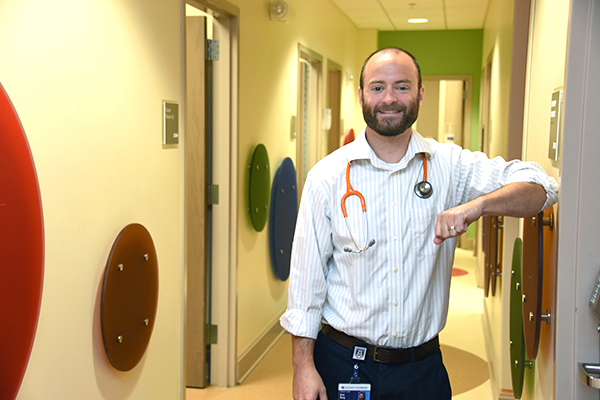
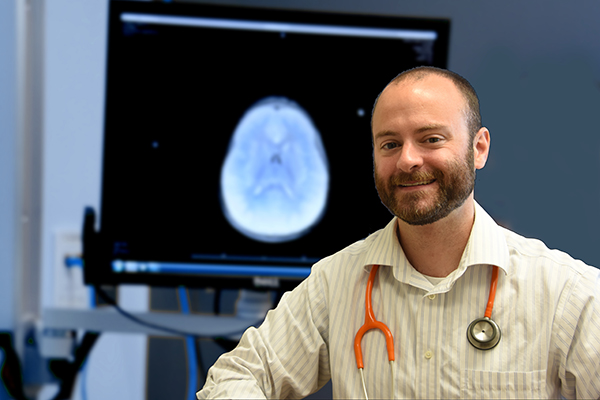
Over seven months, Cason went through 14 rounds of inpatient chemotherapy treatment at Children’s.
“It was either a two-day treatment or a five-day treatment,” Rachel Roberts said. “He had chemo every other Thursday, and then he had six weeks of radiation. This happened all over 28 weeks, so we spent a lot of time in Augusta.”
Cason, who is an honors student and at the top of his class, continued his school work virtually on hospital homebound throughout his treatment from April until November of 2020. Due to the COVID-19 pandemic, Cason’s high school had already switched to virtual learning in March.
“It’s strange to say it, but it really worked out,” Rachel Roberts said. “If there had to be ever a good time for this to happen, it was now, because the students were out of school already in March, and he didn’t miss anything.”
“It was definitely easier knowing all my friends were home and not at school,” Cason added.
Ring said the COVID pandemic did give Cason an opportunity to receive treatment without missing too much of his regular, daily life.
“It’s never been my experience that people going through cancer have the rest of the world put on hold for them,” Ring said, chuckling. “But in Cason’s case, coincidentally, everybody else kind of took pause and had to stay home just like he did.”
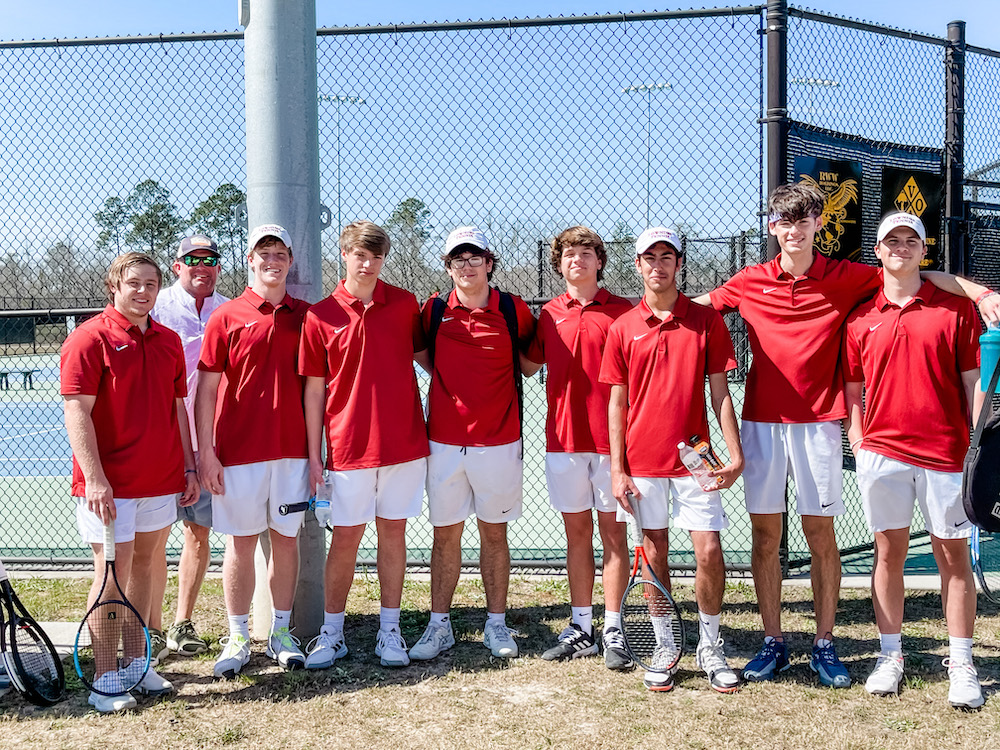
But the radiation and chemotherapy treatments were far from easy, Rachel Roberts said.
Initially, Cason’s parents had to take turns seeing him because of the COVID visitation restrictions at the hospital.
“Cason’s dad, Ricky Roberts, and I would have to swap off and that was hard because Cason had to go through chemo treatments like that,” Rachel Roberts said. “My husband would stay all day and I would spend the night with Cason. When the one parent restriction was finally lifted, it made the situation a little easier for Cason and us.”
“But Cason was a trooper,” said Rhonda Stokes, Cason’s grandmother. “He never gave up.”
If it hadn’t been for the kindness and support of the nursing staff on the fifth floor of the Children’s Hospital of Georgia, Rachel Roberts said those long months of treatment could have been intolerable.
“We love all of our nurses on 5C at the Children’s Hospital of Georgia,” Rachel Roberts said, smiling. “They are just the best. They take care of the entire family. And we would get the same nurses every visit. So, now, it’s like they’re a part of our family because we’d see them every other week and we spent five days up there every other week.
“There was never a time that something wasn’t taken care of. I just can’t say enough about how incredible they are. We just love them.”
Kassandra Larochelle, the charge nurse on 5C in Children’s, said the Roberts family was a joy to have in the hospital.
“With Cason, I immediately took to that family,” said Larochelle, who has been at Children’s for four years. “I ended up having Cason every single Thursday for chemo. The clinic would call up here and say, ‘Are you ready for your boy?’ I’d say, ‘Yeah, send him up!’ He was always so polite and positive about everything.
“As a nurse, you just try to be what the family needs you to be, whether that’s purely being a nurse or a friend. And with Cason, it was definitely both. He’s just the sweetest guy from the sweetest family. If I could raise a kid like him, I would be proud.”
And Cason’s family was truly supportive of everything he was facing each day, she said.
“We wanted them to know, ‘We’re here behind you 100,000%,’” Larochelle said. “Because, at the end of the day, we care about them like they are our own family.”
After all, many of the doctors and nurses have experienced similar health scares in their own families, she said.
“My cousin had cancer when she was 5 and I was 6, and then my dad had cancer, so I just always knew I wanted to be a hematology/oncology nurse,” said Larochelle, who moved to Georgia from Rhode Island. “And this hospital is fantastic. We take care of some of the sickest patients and I really wouldn’t have it any other way.
“I think what we have on this floor right now is just a very loving group of people who would do anything for each other and the families we take care of each day. As a nurse, you need people here at work to help pick you up so that you can help pick the family up, and that’s definitely what we have here.”
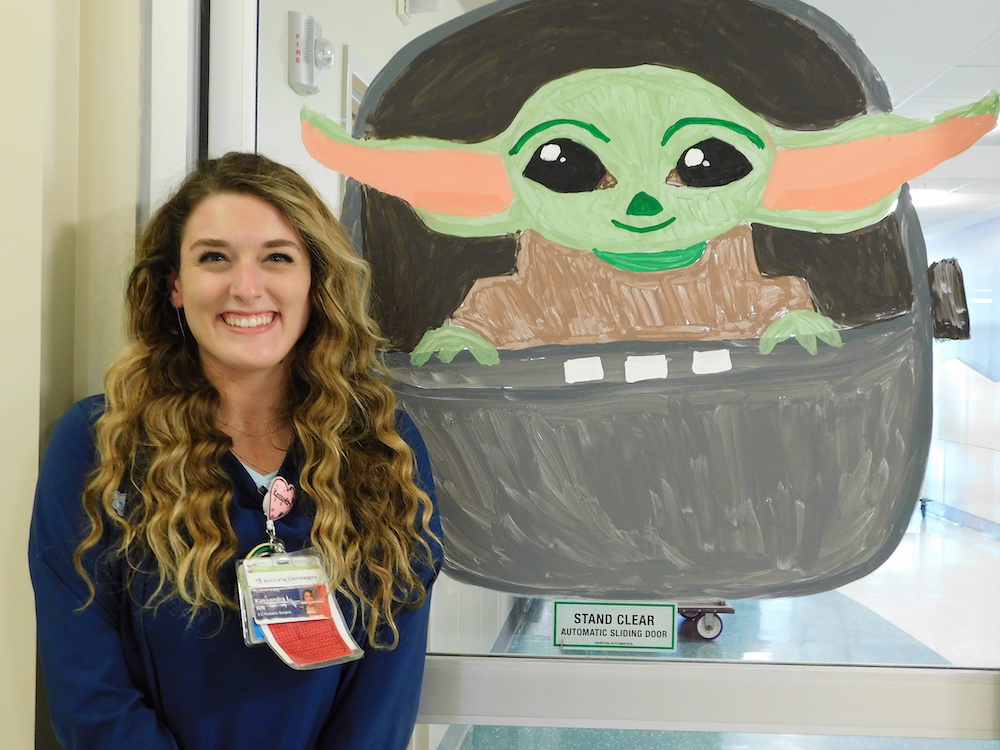
Katie Turner, a nurse who has worked on the fifth floor of Children’s for the past two years, said the 5C staff makes it a priority to listen to the patient and their family to make sure each child receives the highest level of care.
“Here at CHOG, we go the extra mile for our patients,” Turner said. “Whether it is trying to get them dietary items that they want or just trying to make their experience as easy as possible so they don’t have to worry. Because the last thing families need to deal with is anything other than just making sure their child is OK and taken care of, health-wise. They don’t need any other worries or stress on them.”
Turner was also inspired to become a nurse after her grandfather got sick when she was in college.
“Just watching the nurses take care of him and how selfless they were inspired me,” she said. “I mean, they were there day in and day out doing everything. I feel like you wear so many different hats as a nurse.”
For the past four years, Victoria Gerasimek has worked as a nurse on 5C and she remembers the day Cason checked into Children’s.
“When I first admitted him, we just kind of hit it off as friends, like buddies,” Gerasimek said. “I tried not to baby him too much, even though it was all very new to him. We just kind of clicked. And his mom is so great. We could talk for hours. He seems to be really close with his mom, too, so that helps a lot when a child is facing such a hard challenge like cancer.”
As soon as Gerasimek walked into Cason’s room, she immediately knew whether he was having a good or a bad day.
“You knew when he wasn’t feeling good because he would hide under that blanket,” Gerasimek said, laughing. “But sometimes you could get him out of his shell, just talking about sports or school. We enjoyed having them on the floor because they made the most of it. In fact, I remember Cason dressed up as Mr. Clean for Halloween.
“He embraced everything that he had going on, which honestly made it so much better. I think he was more of a positive light for us than the other way around.”
Patient Care Technician Mary Lanham said Cason was always friendly to the staff, no matter how he felt.
“Once he’d wake up, he was ready for the day,” Lanham said, adding that it was clear he was anxious to return to his normal life in Valdosta. “That family was a long way from home, so I knew he was ready to get his treatment over so he could get back to his friends and family in Valdosta.”
Nurse Alexis Sullivan said it meant the world to her knowing the Roberts family had a positive experience during their tough stay in Augusta.
“I’m very thankful to have families like the Roberts because it does make the job more rewarding,” Sullivan said, adding she has 4-year-old twins of her own. “It is very hard to take care of kids when you’re giving them chemo. It’s just difficult to wrap your mind around it sometimes. It can suddenly hit you, ‘This could be my kid.’
“So, I try to put myself in their shoes because being in the hospital, period, is stressful, but when you’re a kid with a diagnosis like cancer, it can be really scary for everyone. But they were like your perfect family.”
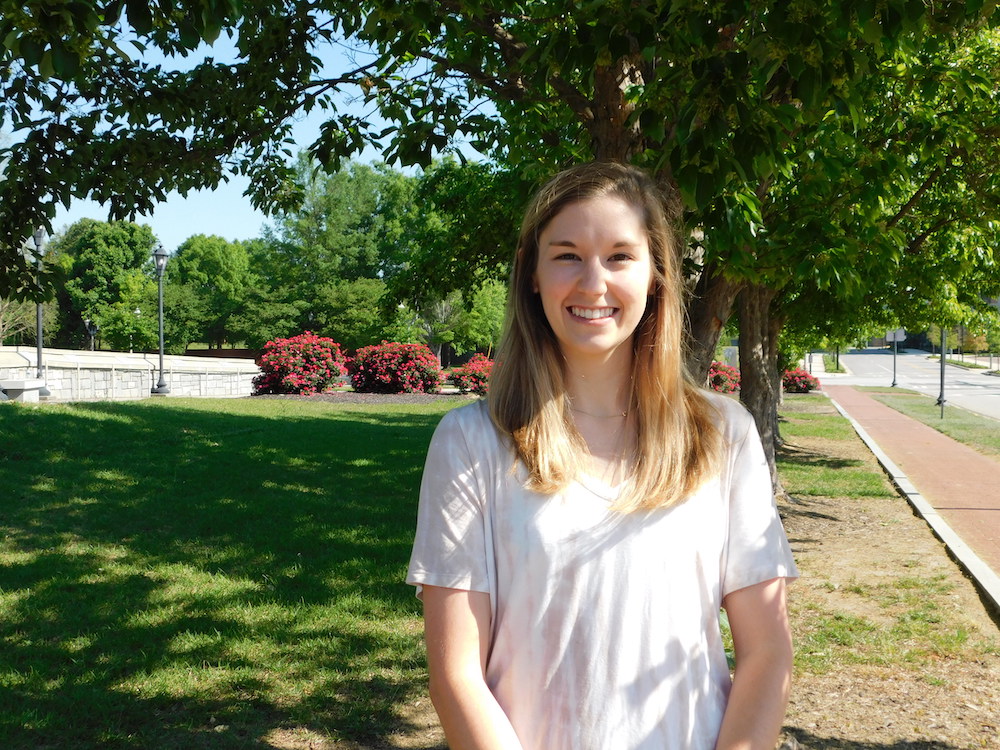
On Nov. 9, 2020, Cason had finally completed his treatment at Children’s, and Ring said he couldn’t be more pleased with the results.
“Cason is cancer-free. He’s in remission,” Ring said after a follow-up appointment with Cason in February. “As doctors, we often hesitate to use the word ‘cured’ because it’s hard to call someone cured until I know for sure it hasn’t come back. Really, time is the best test for that. But he is cancer-free. He’s in remission and I expect him to stay that way. The chance of his cancer ever coming back is actually very low.”
The Roberts family was overjoyed to hear the good news and Cason quickly returned to his regular routines.
“As soon as Cason finished his treatment, he went back to school. He actually returned to school the Monday after Thanksgiving,” Rachel Roberts said. “He was back playing tennis with his team this spring. Cason made all A’s while on homebound to continue his 4.0 GPA and he is very active at Lowndes High. Cason is the treasurer of the junior class and is a member of many other clubs and community organizations.
“On May 5, Cason turned 17 and he is really looking forward to the summer and his senior year.”
With Cason being treated at Children’s, Ring said the hospital was also able to see how a patient with this kind of soft tissue sarcoma responds to chemotherapy and radiation treatment.
“What we’re able to do is tailor everyone’s individual chemotherapy, radiotherapy and surgery to that specific type of tumor and its specific genetics,” Ring said. “Likely in the future, we will have a BCOR sarcoma specific chemotherapy regimen that we’ll use specifically for patients like Cason who have these very rare tumors.”
The Roberts family said Cason’s positive experience at Children’s has made him consider a future career in medicine.
“After all of this, Cason is thinking about becoming a doctor,” Rachel Roberts said, smiling. “Honestly, I could not be more grateful to Dr. Ring. He was always available and I could email him and he would email me or call me back. Even silly questions, he would get back to me. I couldn’t be more pleased with him and the entire nursing staff at CHOG.”
Ring said Cason would be a wonderful addition to the medical field.
“Cason is an incredibly healthy young man. I expect him to do very well in the future,” Ring said. “And if Cason had a positive experience here at CHOG and he feels comfortable around the medical field, I’m very happy to have him.”
Even during Cason’s return check-up in February, the Roberts family had to visit 5C to once again thank all of the nurses and medical staff.
Larochelle said the nurses practically mobbed Cason because everyone was excited to see him doing so well.
“You get attached to these patients,” Larochelle said. “I did pediatric hospice before I came to CHOG, and it’s so amazing to me now to watch these patients be so sick, and you look at them and they have no color in their face, they have no hair on their head and they’re really down and sleeping all the time.
“Then, you watch patients like Cason who bounce back. He went to Florida for spring break, he’s working this summer and he just attended his formal dance. When they come up here and give me big hugs and I see that they have facial hair and hair on their head, it means the world to me.”
Seeing patients like Cason become cancer-free strengthens the entire nursing staff to help each and every family that faces a scary medical diagnosis.
“We are always so hopeful for every patient, but when they get really sick, we get nervous and we get scared with the family,” Larochelle said. “I’ve held parents up in the hallway. The nurses, we’ve held each other up in the hallway.
“But whenever a patient gets to ring the bell, celebrating their final day of treatment, it’s super emotional. Everyone cries because we’re just so happy for them. That’s why when I see Cason looking so healthy and happy, I can’t help but want to tackle him to the ground with hugs.”
